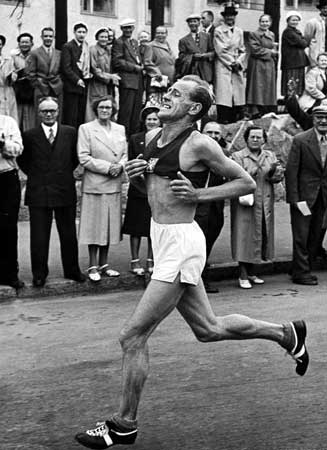The day Daisy left the Shelter, everybody in the office cried but the tears were happy. People – and dogs, for that matter – leave shelters all the time. People because it is such hard work and emotionally challenging, the dogs because they leave for their forever homes.
Daisy came into the shelter a stray during a brutal snap of winter, found wandering in the rural areas of Waha, a radio transmitter on her collar. We didn’t know how long she suffered exposure to the weather but it was long enough for the transmitter to go dead. Daisy was skin and bones.
A pointer experienced in working the fields (the radio collar was a giveaway), we waited for her owner to call. We hoped it would be soon. In the meantime, we combed our lost-and-found records to see if someone reported her as missing.
Nothing in the records.
And no phone calls from an owner frantic to find her.
Daisy went up for adoption a week later. Before we adopt our dogs, we always test them for temperament. Daisy was an oasis of calmness and completely unflappable. She simply didn’t take offense when you took away the food bowl and, when tested for dog aggression, just looked at the test dog as if to say, “Shush, youngster, don’t you fret.” Daisy was an older dog, about ten, and as easy-going as a grandma bringing cookies and lemonade to the little ones.
Daisy possessed such a kind heart that we expected that she would be adopted quickly. We were wrong. A sad secret is that most people don’t want old dogs, not even kind hearted ones. They want puppies, young scampering bundles of energy that will entertain them. Old dogs need more care and adopters worry about getting attached and then watching their newest family member fade too soon. So old dogs wait, patiently, a bit longer for their forever home.
Daisy possessed another flaw, one that puzzled us. She was always agreeable and friendly but she didn’t show well. All the dogs flood to the front of the kennels (we have outdoor kennels for our animals so they can enjoy the sunshine on nice days) when cars pull into our gravel parking lot. Daisy rushed forward too, and watched the people exiting the vehicles.
And always went to the back of her kennel as though she were hiding.
We thought that perhaps she had been abused at some time because she retreated faster if she saw men getting out wearing baseball caps. Dogs will react to visual clues just as people will. If men with sunglasses hit the dog, the dog will learn to fear men with sunglasses.
A week passed with no changes and assessment time for the newer dogs arrived. We placed Daisy into service helping us. Her job was to simply stand quietly while the other dog ignored her, or sniffed her butt, or barked or growled at her. Occasionally, one will lunge – which is why there are always two technicians involved, first to keep themselves safe but also to keep the dogs safe.
Daisy was an immediate star and became our canine ‘greeter’, welcoming new pets to the shelter. Though she didn’t earn multi-million dollar contracts, she did get special treats as a reward. Her favorite was canned cat food. “Gotta work first” became a command we used when she tugged the leash as if to tell us, “Hey, that cat food is just over there. I can smell it” and gazed at us with those big sad eyes. Daisy was a very bright girl and she understood when we gave the command. She dropped in next to the tech and she would go to ‘work’ – just standing around meeting new friends, from her perspective – and then it was treat time.
When she wasn’t working, Daisy kept our receptionists company, lying quietly behind the counter – if one of the receptionist happened to have a spare hand that needed to pet a dog, she was a willing volunteer.
Each week was the same and we found other opportunities for Daisy to help. And each week passed with her watching the cars come from the front of her kennel and watched them leave from the back. We didn’t understand why someone couldn’t see the loving old dear as we did but Daisy never reached the top of anyone’s adoptable list.
Daisy was with us eight months. That’s a long time for an old dog but, if no one else will give a good dog a forever home, then we stand in and say, “Here, be with us, for as long as you need.”
The day she left us was average for early August. The sky was clear and the sun hot. The dogs, including Daisy, were outside in kennels, most sitting in the shaded areas or lapping water from their bowls. Cars came in, cars left, Daisy walked forward, Daisy retreated.
I was outside watering the dogs when I heard the truck crunching across the gravel, park and the big diesel shut down. Daisy came to the front of the kennel as two young boys and a tall, lean man with a blue ball cap climbed down from the truck. Her nose pushed against the fence and waited for the retreat. Instead, she sat, a pretty, picture perfect sit/stay.
I looked her, stunned, and then to the family of men headed to the front door of the Shelter. I dropped the hose and sprayer and hurriedly strode towards them. Halfway across the parking lot, one of the boys, maybe 11, maybe 12, saw me. His eyes slid past me to the kennel and his eyes got very wide.
“Dad,” he said, pulling on the man’s left hand and pointing past me as I approached.
He looked, turned and said to me in a puzzled voice, “I think you have my dog.”
We did.
While we filled in the lines on the paperwork, the man explained how she disappeared. The owner, a hunter, loaned Daisy to a friend along with the radio tracker. Daisy – who was 12 and older than we thought – was an expert hunting dog as well as the family dog. The friend, unaccustomed to hunting dogs, mishandled Daisy and lost her in the snow-filled forests.
The owner called the shelter, desperate to find her. He took vacation from work to search the hills for her, tramping through the snow with the receiver for the radio on her collar, long after the battery died. It took eight months for them to recover from losing Daisy before they were ready to adopt another dog.
Daisy played with the kids as the man recounted the story and, as each of us came in to say goodbye, she ran up to us for a quick pet before running back to the boys. “See, these are my people,” she seemed to say, quite proudly.
They loaded Daisy into the truck with a command. She jumped in, settling herself into her seat in the middle of the rear bench. The boys climbed in beside her and the dad got in behind the wheel of the big truck.
I realized, as the doors slammed, that Daisy wasn’t shy or fearful. She ran to the front of the kennel to see who was coming. She retreated when she saw it wasn’t her people. For eight months, patient Daisy waited and she never lost faith in all that time that her people would come for her.
So yes, I cried but the tears were happy. Daisy was going home.
If you enjoyed this short story and would like to help the Lewis Clark Animal Shelter, please consider making a donation to them here. This story is based on the tale of a special dog told to me by my favorite person at the Shelter, my wife.
Copyright © 2013 Paul Duffau

